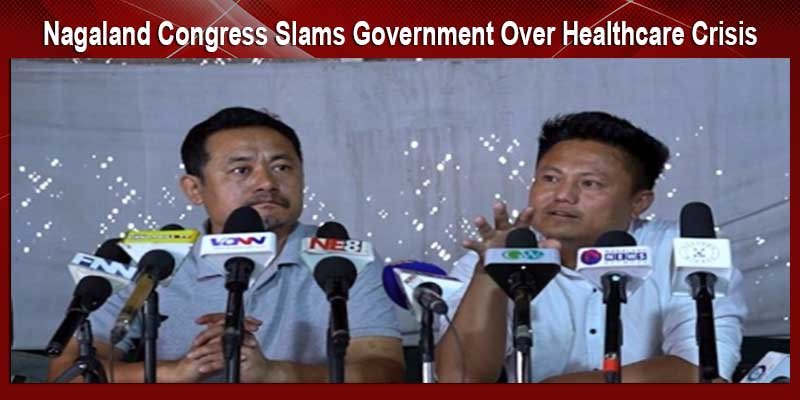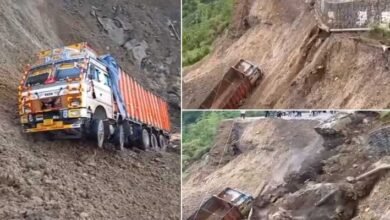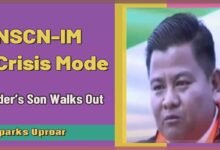Nagaland Congress Slams Government Over Healthcare Crisis
The Congress also expressed concern over the shortage of doctors and medical personnel across the state, revealing that 57 Primary Health Centres (PHCs) operate without any doctors.

KOHIMA — The Nagaland Pradesh Congress Committee (NPCC) has raised alarm over the deteriorating state of healthcare in Nagaland, citing a severe shortage of essential medical equipment and trained healthcare personnel.
During a press conference held in Kohima on March 24, 2025, Meshenlo Kath, Chairperson of the Public Grievances Department, NPCC, criticized the state’s Health & Family Welfare Department for neglecting critical healthcare needs, particularly in remote districts, thereby jeopardizing the well-being of citizens.
Kath highlighted two pressing issues plaguing the healthcare system: the absence of basic medical equipment and an acute shortage of medical staff. He pointed out that the lack of CT scan facilities forces patients to seek services at private hospitals or travel long distances for essential diagnostic tests. “In districts like Zunheboto, there is no CT scan facility. Patients from remote areas have to travel over 150 km just to get a scan done. This is unacceptable,” he stated.
Also Read- Assam CM Himanta Biswa Sarma Vows Zero Tolerance on Cow Smuggling
Kath, also alleged that though the Health & Family Welfare department is reported to have spent between INR 40-240 crore on upgrade of medical equipment between 2023 and 2025, he is unaware of any such upgrade.
The Congress also expressed concern over the shortage of doctors and medical personnel across the state, revealing that 57 Primary Health Centres (PHCs) operate without any doctors. Despite investments in modern medical equipment intended to enhance healthcare services, many of these facilities remain non-functional due to the lack of qualified technicians to operate them. This issue is particularly severe in rural and remote areas where healthcare access is already limited by geographical and infrastructural challenges.
Also Read- Controversy Over Viral Audio Clip in Assam Assembly
Describing the situation as a “healthcare crisis,” the NPCC accused the Health & Family Welfare Department of “playing with the lives of people” by failing to address these critical gaps. They cited instances where advanced diagnostic and treatment equipment lies idle, rendering infrastructure investments ineffective.
The party has demanded immediate government action to rectify these systemic failures, urging prioritization of staffing and the operationalization of existing facilities. With a population of approximately 2 million, Nagaland has long faced healthcare challenges exacerbated by its hilly terrain and dispersed rural settlements.
Also Read- Uproar in Assam Assembly Over Alleged Assaults and Safety Concerns
Nagaland’s healthcare infrastructure includes 11 district hospitals, 33 community health centers (CHCs), and 143 primary health centers (PHCs), according to the Department of Health & Family Welfare. However, service delivery remains inconsistent, particularly outside urban hubs like Kohima and Dimapur.
Modern diagnostic machines and surgical tools remain underutilized due to a shortage of trained personnel, depriving patients of potentially life-saving interventions. Many CHCs and PHCs operate with minimal or no medical personnel, relying on auxiliary staff or ad-hoc arrangements. This forces patients to undertake arduous and often costly journeys to urban centers, which is impractical for many due to poor transportation and financial constraints.
The crisis disproportionately affects remote districts such as Longleng, Mon, and Noklak, where healthcare access has historically been minimal. The current equipment and staffing deficits have only worsened the situation.
The NPCC’s call for accountability has gained traction in public discourse, amplifying demands for urgent reforms. This growing discontent reflects widespread frustration with the state government’s handling of healthcare, aligning with the Congress’s push for immediate and effective solutions.









